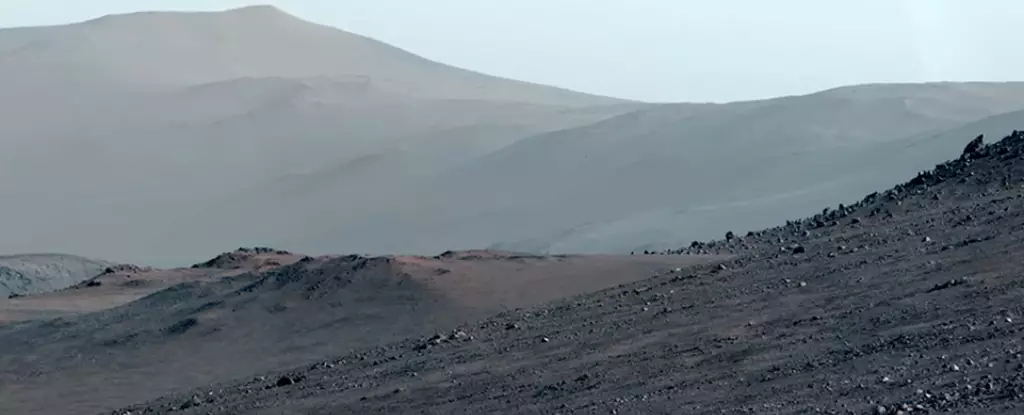The selection of Jezero Crater as the landing site for NASA’s Perseverance rover is a compelling chapter in the ongoing exploration of Mars. Distinguished by its unique geological features, Jezero Crater was an ancient lake bed and is characterized by a striking delta fan located on its western edge. Earth scientists understand that such delta formations typically emerge in environments where water flows, depositing sediments over vast periods. Consequently, Jezero Crater, with its rich clay deposits, presents a thrilling opportunity for astrobiologists to seek out biosignatures—where remnants of past life might still linger.
Since its landing in February 2021, Perseverance has devoted itself to a comprehensive scientific investigation of this terrain. The rover’s journey can be viewed as an expedition into a chapter of Martian history that has remained largely untouched, with the promise of unlocking the planet’s secrets residing within its sedimentary layers.
Exciting developments unfolded recently, as the Perseverance rover reached Lookout Hill, the top of Jezero Crater’s rim. This achievement was no small feat; it took three and a half months of meticulous navigation, during which the rover ascended approximately 500 meters (or about 1,640 feet) while conducting scientific observations. The accomplishment signals the onset of what the mission team has dubbed the Northern Rim campaign, aimed at traversing the northern faction of Jezero’s southwestern rim.
The Northern Rim campaign is particularly significant as it will guide Perseverance in exploring largely uncharted geological territory on Mars. Over the coming year, the rover anticipates a journey of around 6.4 kilometers (4 miles), during which it plans to investigate up to four scientifically intriguing sites. Each new layer of rock examined has the potential to reveal valuable insights into the climatic and environmental conditions that prevailed on Mars over billions of years.
Ken Farley, the project scientist for Perseverance, recently articulated the scientific intrigue this campaign holds. As the rover traverses from the top of the crater into a new geological context, it will shift focus from relatively younger rocks that filled Jezero Crater during its formation—an event that occurred roughly 3.9 billion years ago—to the ancient Martian crust that contributed to the formation of the crater rim itself. These rocks are some of the oldest materials found in our solar system, potentially holding critical clues about the early conditions on Mars as well as its developmental similarities to Earth.
The first destination on this journey is Witch Hazel Hill, where Perseverance will inspect an expansive layered outcrop. Each stratum here is akin to a page in a book, chronicling the chronological environmental variations of the Martian landscape. Scientists anticipate that descending this hill will transport them back in time, allowing them to piece together a more comprehensive narrative of Mars’s ancient conditions.
As Perseverance leaves Lookout Hill behind, it will extend its scope to a region termed Lac de Charmes. This area is of particular interest due to its relative immunity to impacts that contributed to the crater formation. Following this initial descent, the rover is slated to return uphill to investigate megabreccia—a conglomeration of fragmented rock likely resulting from immense impact events, such as the one that shaped the Isidis Planitia basin.
The geological eras during which these formations occurred, especially the Noachian Period, are known for being a time of significant hydrological activity, during which river valley networks flourished. This period’s geological richness informs scientists’ assessments of past Martian climates and habitats that may have been conducive to life. Because the Noachian era is hypothesized to have been dominated by warm and wet conditions, the quest for biosignatures remains pivotal to understanding the planet’s capacity for hosting life.
As the scientists of the Perseverance mission continuously adapt and innovate to tackle the challenges presented by Mars’s rugged terrain, they hold onto the hope that the insights gained through these explorations will illuminate not just Mars’s history but also our own planet’s evolutionary narrative. During a recent media briefing, Steven Lee, the deputy project manager for the mission, shared his awe at the rover’s resilience in navigating the treacherous landscape. The anticipation now grows palpable as Perseverance embarks on this next chapter of discovery, instilling hope for groundbreaking findings that will serve as a testimony to the exploratory spirit of humanity. In the search for answers about the existence of life beyond Earth, every discovery, every layer unearthed, brings us one step closer to understanding the cosmos around us.


Leave a Reply